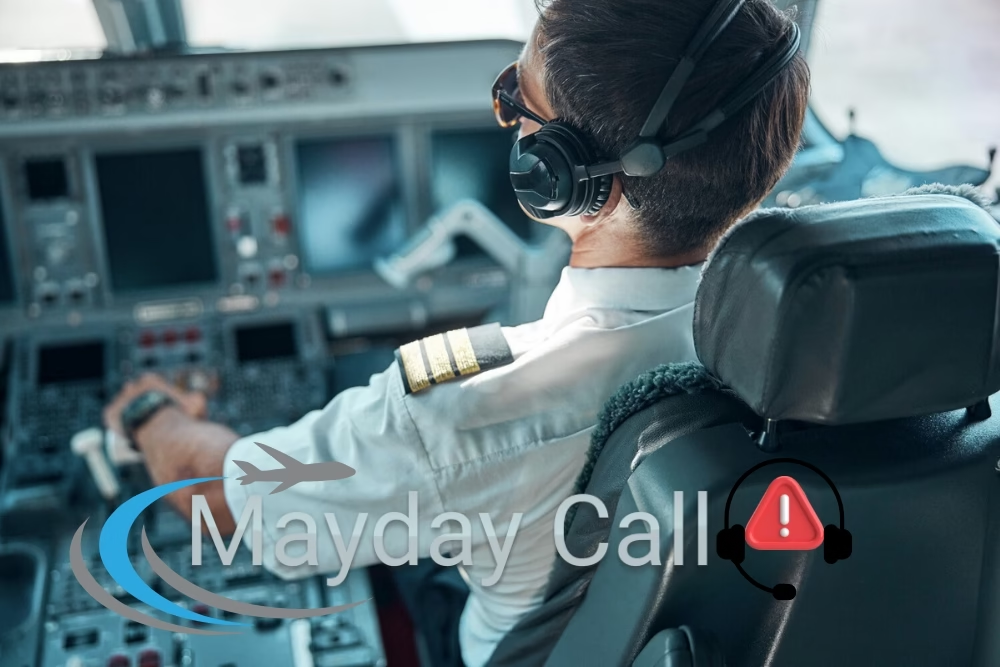A tragic plane crash occurred in Ahmedabad, Gujarat, on Thursday when an Air India flight carrying 242 people went down shortly after takeoff. The aircraft, a Boeing 787 Dreamliner headed to London, crashed near the Meghani Nagar area, sending thick black smoke into the air and creating an immediate emergency response.
According to Faiz Ahmed Kidwai, head of the Directorate General of Civil Aviation, Flight AI 171 took off from Sardar Vallabhbhai Patel International Airport at 1:39 p.m. local time. Just five minutes later, it crashed into a residential neighbourhood. The flight was en route to Gatwick Airport in the UK. On board were 232 passengers and 12 crew members. Emergency services were quickly deployed to the crash site and the airport.
One term that’s often mentioned in such incidents is the “Mayday call.” But what does it mean, and how does it help in emergencies?
Let’s discuss this in simple words.
What Is a Mayday Call in Aviation?
A Mayday call is an international signal used by pilots to alert air traffic control and nearby aircraft that they are facing a serious emergency. It is the most urgent distress call a pilot can make and is only used in life-threatening situations, such as engine failure, fire, or the risk of crashing.
The term “Mayday” comes from the French word “m’aider”, which means “help me.”
How Is a Mayday Call Made?
When a pilot needs immediate help, they make the call using the aircraft’s radio. A standard Mayday call sounds like this:
“Mayday, Mayday, Mayday, this is Air India AI171, engine failure, requesting immediate landing clearance.”
The call is always repeated three times to ensure it’s heard clearly and to highlight the seriousness of the situation. It’s then followed by important details such as the aircraft’s location, nature of the emergency, and intentions.
Mayday vs. Pan-Pan: What’s the Difference?
You might also hear the word “Pan-Pan” in aviation emergencies. This is also an alert, but it signals a less serious issue than a Mayday call. For example, if a plane has a technical issue that doesn’t threaten lives, the pilot may use a Pan-Pan call instead.
| Call Type | Severity | Used For |
| Mayday | Life-threatening | Fire, crash risk, severe mechanical failure |
| Pan-Pan | Urgent but not critical | Minor engine issues, navigation problems |
Why Are Mayday Calls Important?
Mayday calls play a critical role in helping air traffic controllers and emergency services respond quickly. Once a Mayday call is made:
- Controllers clear the airspace to avoid collisions.
- Rescue services are activated on the ground.
- Nearby aircraft are alerted and may assist if needed.
- The pilot gets priority landing clearance.
This early communication often helps save lives by speeding up rescue and recovery efforts.
Was a Mayday Call Sent from AI171?
At this point, there is no official confirmation on whether the pilots of flight AI171 issued a Mayday call before the crash, although some unverified reports suggest it might have happened. This detail will likely come out during the investigation as experts review the cockpit voice recorder (CVR) and flight data recorder (FDR), also known as the black boxes.
These devices store all in-flight conversations and data, including distress calls, and are key to understanding what went wrong.
What Happens After a Mayday Call?
Once a Mayday call is received:
- Controllers guide the aircraft to the safest and quickest landing path.
- Firefighters and paramedics are placed on high alert.
- Search and rescue teams may be deployed if the aircraft is not reachable.
Everything moves into high gear to protect lives and contain the emergency.
The crash of Air India AI171 is a heartbreaking event that brings attention to the importance of emergency communication in aviation. A Mayday call is one of the most powerful tools a pilot has when facing danger. Understanding what it is and how it works helps us better appreciate the safety systems in place and the pressure pilots are under during critical moments.
As investigators look deeper into the crash, the world waits for answers and hopes for improvements that prevent such tragedies in the future.



